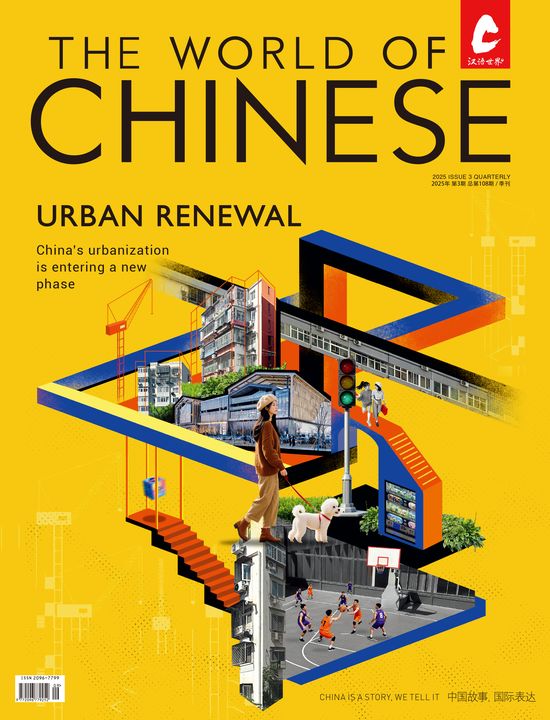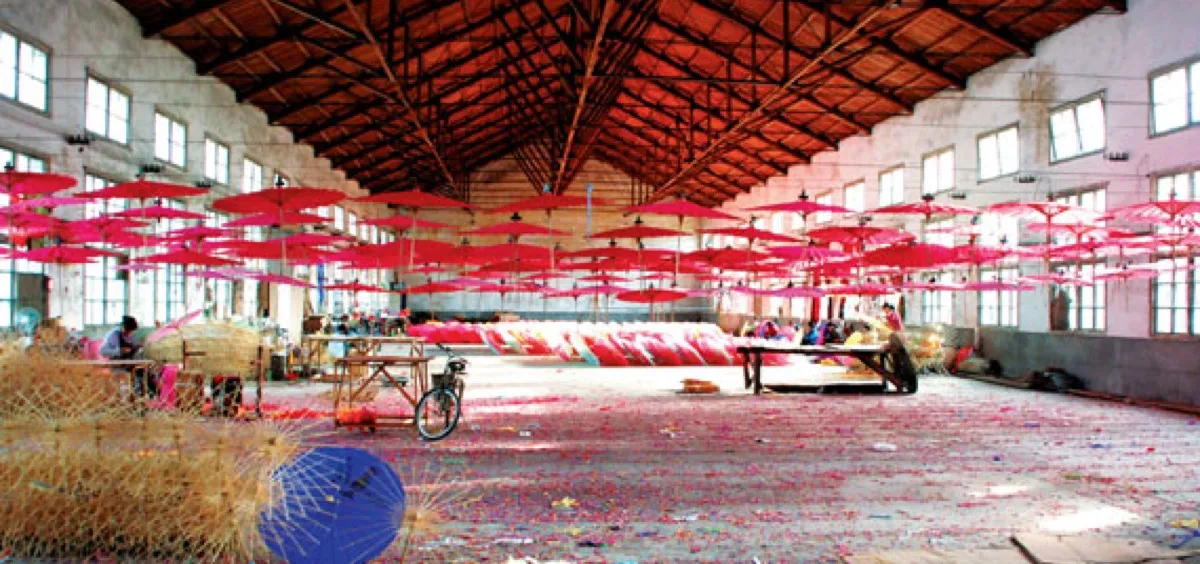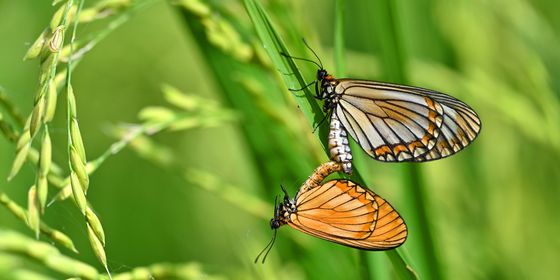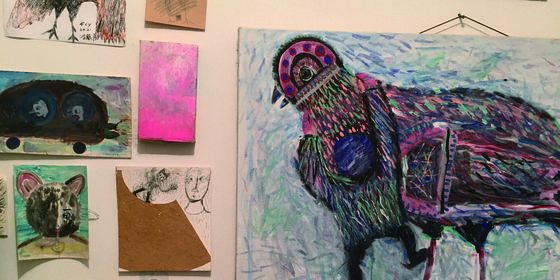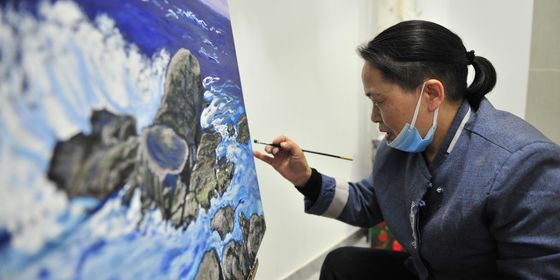A look at a man, his craft, and an obscure art.
Of the myriad of inventions from antiquity that have forged their way into the modern day, the umbrella is one of the few to have retained its shape, function, and beauty. Known to many ancient civilizations, the umbrella has garnered mythological, religious, and social connotations, and the ancient craft of traditional umbrella making in China is still popular. Beijing boasts a variety of shops selling uniquely-crafted umbrellas. In the historic Dashilanr (大栅栏) business street area, Chang Tao’s Qinfenghanyue Craft Shop (秦风汉月油纸伞) is one of the many places where this craft is still a lifestyle.
Mr. Chang is a master of this art and has perfected his technique and aesthetic with years of devotion. A fervent sentinel of traditional Chinese culture, Mr. Chang—painter, poet, and umbrella maker—was born in 1978 in Guangxi Province. Early in his career as a painter, he was tasked with decorating a tea house and decided to incorporate the traditional handmade umbrellas he remembered from his childhood in rainy Guangxi. But, he realized that none of them equaled the beauty or quality of the ones his grandfather made. As such, he established a small studio in Guangxi combining modern techniques with a love for the art of umbrella making. Artists in Guangxi and Beijing now work under his watchful guidance, meticulously following his 86 steps to making a single umbrella, a process that sometimes takes 20 days. The bamboo is harvested from the wilds of Guangxi for processing the following year. The bamboo to be used in the umbrella’s construction is soaked in water, steamed, dried in the sun, polished, and carved. One of the most complicated steps is the umbrella’s skeleton, which is stretched, assembled, glued, and dried. The paper is a thin cotton, brittle during the work process; it is soaked in tung oil (桐油 tóngyóu) for nine days to harden and waterproof it. The final step is adding calligraphy or painted scenery to give the umbrella its traditional look and artistic identity.
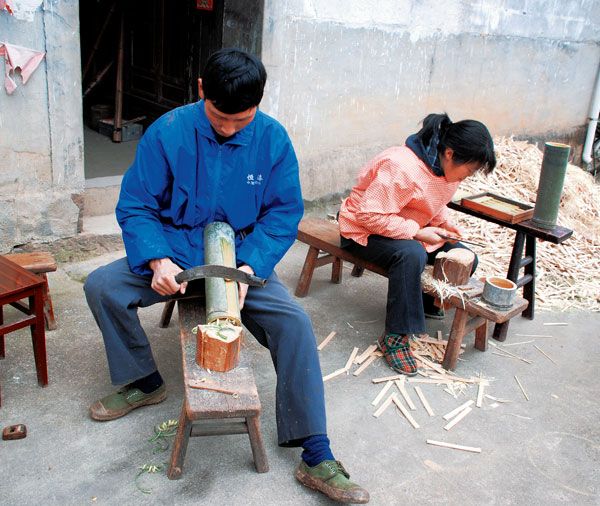
Two workers delicately carve bamboo that will someday make up the skeleton of an umbrella
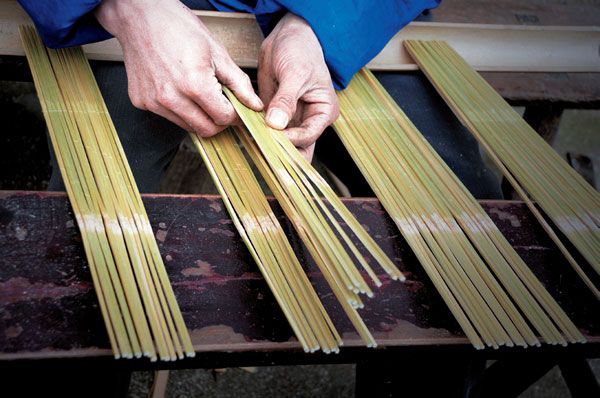
A man seperates bamboo ribs, the building blocks of the umbrella’s skeleton
The First Umbrella
Chinese legend has it that, during the Spring and Autumn Period (770 B.C.–476 B.C.), the wife of the famous carpenter Lu Ban (鲁班) built the first umbrella to protect him from the elements as he worked. This progenitor to the modern device was assembled from split bamboo and covered with the pelts of local animals.
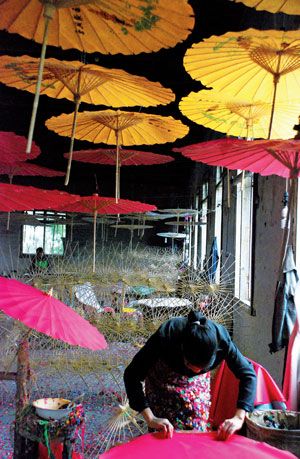
A woman applies colored sheets of cotton to nearly completed umbrell
Oil From Antiquity
It is obtained by pressing the seeds of the indigenous Vernicia Fordii or tung oil tree (油桐树 Yóu tóng shù). Characterized by its desiccative qualities, the Chinese have depended on this oil to waterproof boats and weatherize umbrellas since antiquity. Marco Polo is said to have brought back a sample of this oil after his first visit to China.
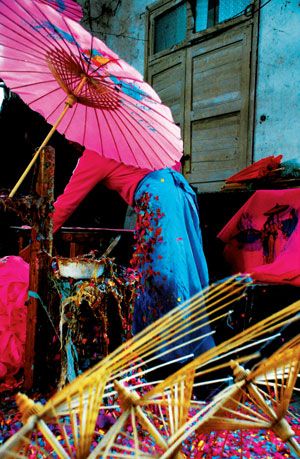
An employee dyes cotton sheets that will make up part of the umbrellas
Bridal Umbrella
In addition to resisting deluge and sweltering heat, umbrellas are used in some traditional Chinese marriage rites. When the bride arrives at her new house, she is often accompanied by a woman who claims a red umbrella as a symbol of protection against evil spirits and the obstacles that the new couple will face.
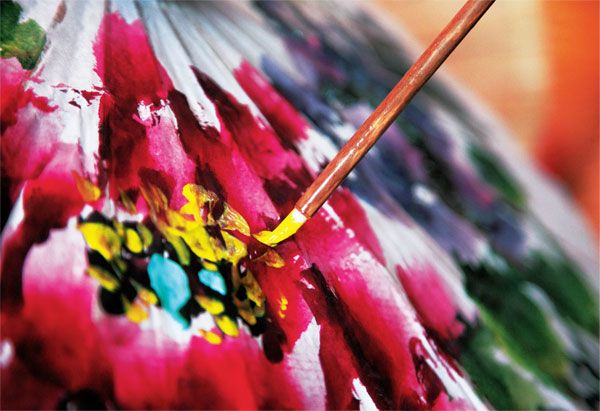
Decorative patterns are added to the delicate umbrellas by hand
Status Symbol
In China, the umbrella was initially used during important ceremonies as a symbol of elegance, prestige, and power. Highranking officials were escorted with umbrellas built with very elaborate fabrics of fine yellow, which symbolized royalty in China. Officials of lower rank had blue or red umbrellas.
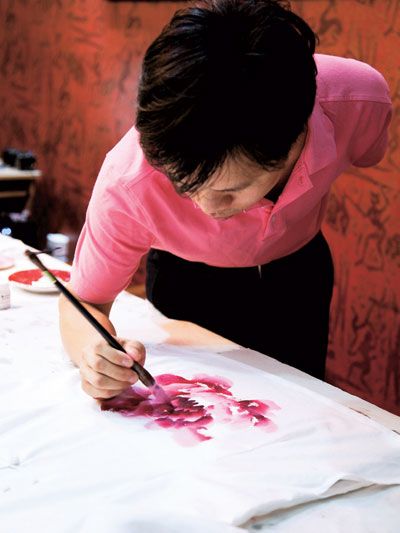
Chang Tao paints a new floral motif for his umbrellas
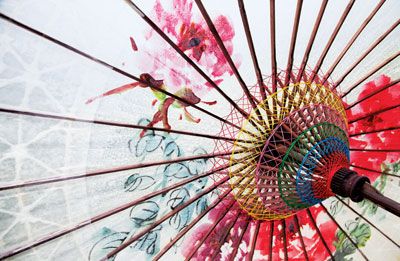
Delicate and functional, the completed umbrella is ready to face storms and storeroom windows
